Why Ajay Ghale isn't the real star of Far Cry 4
Mountains out of molehills.
Do you remember that time in Far Cry 3 Jason Brody accidentally set fire to a truck, only to have it careen down a hill into an enemy encampment, crashing into a crudely constructed tiger cage and serendipitously unleashing the trapped beast upon his unsuspecting foes? That one instance he made a daring escape from a pursuing mob, swan-diving off a waterfall mid-explosion moments before being devoured by a hungry crocodile? Or how about that unforgettable evening when, outgunned and outnumbered, he used a Komodo Dragon to clear an enemy encampment, simply because he was all out of bullets?
You don't recall any of this, of course, because these incidents are entirely unique to my save game. Every single person to have visited Far Cry 3's lush island setting teeming with infinite emergent gameplay possibilities comes away with their own collection of tales with which to regale their friends, like worn personal snapshots tucked safely inside their sharkskin wallet. Without exception, the best narratives to come out of the Rook Islands were the ones that players created on their own. The 'real' canon story that Far Cry 3 revolved around - the one about Jason Brody and his privileged dudebro buddies becoming embroiled in a native insurgency - was perhaps the most widely criticised aspect of an otherwise universally acclaimed title. It's unsurprising, then, that Ubisoft's answer to this in its sequel, Far Cry 4, is to ensure that the tale of its protagonist Ajay Ghale, returning to his native homeland Kyrat in order to scatter his mother's ashes, takes something of a backseat so that each individual player's actions, and the resultant anecdotes, can come to the fore. Far Cry 4 is your story, not Ajay's.
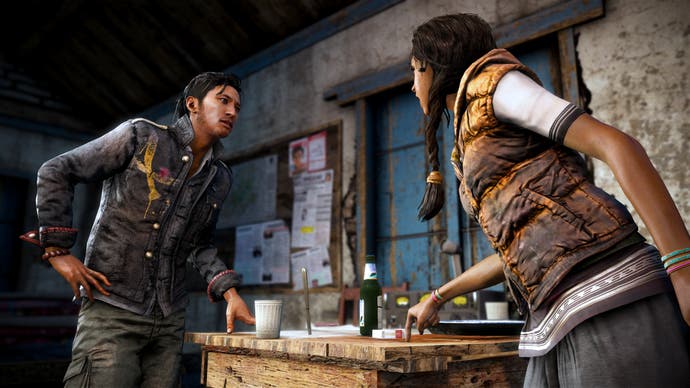
"We set everything up to give players as much freedom as possible," says the game's creative director Alex Hutchinson. "Obviously Ajay Ghale has a backstory, but he's there more as a character to propel you into the world. We're more interested in what you do, how you feel; he's more of a silent protagonist than a talking head."
"It was something very specific that we did, because we don't want the player to be passive," says lead writer Lucian Soulban. "We're looking at all these videos [from Far Cry 3] and all the videos that are coming out are either based on character performance from the NPCs, or they're based on stuff that happened to players while they were in the open world. So we were like okay, we want the player to be the main thrust of the story, and that's the reason we shifted away from a really vocal character."
Not that Ajay is completely silent; he does offer some commentary on the events unfolding around him, and the odd expletive when the bullets inevitably begin singing over his head. But he's no Jason Brody, the rich, white, immature fratboy turned colonial island saviour who rubbed so many Far Cry 3 players up the wrong way. "I think [Ajay] is different in the sense that my tastes run very much towards player agency, and therefore I like a character that gets out of my way," Hutchinson says. "I don't want a character that is saying too much. He's very quiet, and so some people who want to be like riding on some 'Zero to Hero' narrative aren't going to be happy because they're like, 'He should react!' But I'm like, you're the player, that's you - you react. Are you happy or are you sad? When he's all "this is terrible" and you're more "ah, it's not that bad" - it just doesn't connect. So for me I think he's a different character in the sense that he doesn't try to speak for the player - he's a set-up for you. You're returning to the country of your birth, you're from somewhere else but you don't really know anything, and then you do what you want."
Far Cry 4 wants to give you as much freedom as possible within its open world, then, but it also wants players to be able to exercise some degree of authority over the central storyline, with the addition of divergent narrative choices. In one such instance early on in the game, you must decide which one of two allies within Kyrat's freedom fighting movement, the Golden Path, you'll support when they come to blows over the best course of action to take for their cause. One, Amita, wants you to infiltrate an encampment in order to obtain intel that could prove crucial to overthrowing the current regime, whilst the other, Sabal, requests you help fortify a nearby friendly outpost whose soldiers will almost certainly be slaughtered without your assistance. "We just wanted to get a little bit of choice into the story, that notion that you need to choose a side so that there is some player agency within the linear narrative. Because Far Cry 3 - we had all this choice in the open world, and then it was just cutscene, mission, cutscene, mission, in the story," admits Hutchinson.

These narrative choices won't affect Ajay's story in any real, lasting way though. From speaking to other players following my hands-on session, it became clear that the branching timelines these two choices create converge again just a few missions later. But they will, at the very least, create a bit of variation and the illusion of greater control over Ajay's destiny. "It's more about the tone; why you're doing the mission that you're doing," Hutchinson explains. "And it affects your sub-objectives. when you pick one; all your sub-objectives until the next big choice are different, based on the previous choice that you made. We really wanted those water cooler moments of people coming in and at least having something to talk about in the story and say 'oh I'm with Amita because she said blah' or 'I'm with Sabal because whatever,' as opposed to [Far Cry 3] which was like, I don't talk about the story because the story is exactly the same for everyone. But no, there are no radical narrative diversions."
What you do (or don't, as the case may be) also has greater tangible consequences and rewards in relation to gameplay, thanks to Far Cry 4's new Karma system. As well as making choices on whether to help or ignore potential allies within main story missions, random Karma events can now take place at any time within the open world. During these altercations, you'll stumble across Golden Path allies under attack from the likes of wild animals or followers of Pagan Min, corrupt dictator and self-appointed 'king' of Kyrat. You can choose to do nothing and carry on your merry way, or you can intervene and attempt to save their lives. Doing the latter, however, will work towards increasing your Karma Level, meaning that you can then call your newfound friends in for back-up whenever you need them the most. The more people you save, the better the help you'll receive later, and the bigger the discounts you'll benefit from at trading posts.
And quite frankly, you'll need all the help you can get - Pagan Min is a dangerous adversary. It's hard to imagine any antagonist living up to Far Cry 3's Vaas - who stole the show from the get-go with his "definition of insanity" monologue during the game's initial reveal at E3 2011 - but Min is another, equally enticing kind of menace. "It's funny," says Soulban, "because the process behind the creation of Vaas and that of Pagan Min were two entirely different things. Vaas was lightning in a bottle; it happened and we all kind of looked at each other and went 'that's a really interesting performance', and just took it from there. Pagan Min was more of us looking at the process, getting into rooms and arguing. We had several different versions of Pagan Min before this one. Versions that will never see the light of day, you'll never recognise. We didn't like them, we opened up the cellar door, kicked them down into the cellar and then locked it. They're done, they're gone.
"The thing about Pagan Min was he was always supposed to be a really despotic ruler, but there was one version where he was a lot more refined and cultured and a little bit more of the Hannibal Lecter approach. But eventually we were like no, we want something that had a little bit more pop and pizazz. We were in meetings about it and debating and arguing, and someone was like 'oh what if he does this,' and then suddenly that frames another aspect of the character. And during this meeting, we had a production manager in there by the name of Jonathan Campeau, this really quiet guy just sitting making sure everything is going accordingly, and we're talking, saying what's Pagan Min doing now? And he just goes, 'Maybe he takes a selfie?' And all of us just look at him and go [holy shit!] It was one of those brilliant moments."
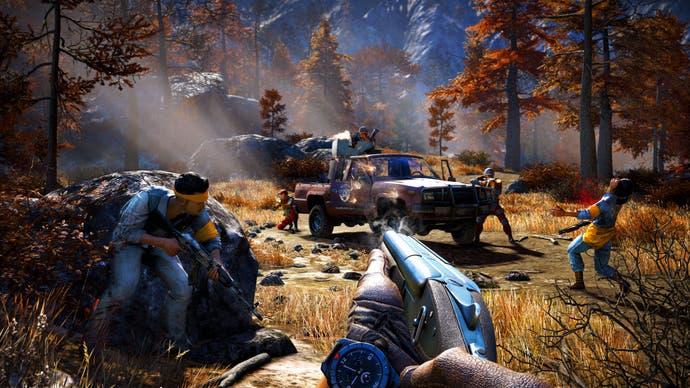
A blood-drenched Min nonchalantly pausing mid-murder to take a picture with a confused, captive Ajay during the game's opening cinematic could certainly be considered his equivalent of a character-defining meaning of insanity speech. Min's personality is an irresistible blend of compellingly affable and chillingly sociopathic; a bad guy who's as concerned with getting gore on his new designer shoes as he is with maintaining an iron grip over Kyrat's inhabitants. Even when offscreen, his presence is felt throughout the open world, from the Bell Towers (Far Cry 4's version of radio towers) spewing forth his political propaganda to the posters bearing his name littering towns and villages, to the radio stations clearly under his influence.
But as much as Min wants to convince you, and everyone else, that Kyrat is his dominion, don't be fooled. The sun-dappled plateaus and the snow-capped peaks (which, incidentally, are separated by loading screens masquerading as Sherpas who will ferry you from one extreme to the other) are unequivocally yours to explore and to conquer. "We're trying to build a sandbox where you'll see lots of loose goals where you need to get to a point or to finish someone off, but how you do it and why you do it and when you do it is up to you," says Hutchinson.
To all intents and purposes, the core gameplay loop of Far Cry 4 is very similar to that of 3, but for the majority of people who enjoyed their time on Rook Islands this won't be something to complain about. "GTA doesn't change between versions, pretty much at all. Neither does Halo. And I think we're more different than we are the same; there's still outposts and there's still towers, but pretty much everything else is different," Hutchinson concludes. "I guess the hunting would be similar but why you do it and what you get is different. There are huge new things like the branching narrative, the co-op in the open world, new vehicles, new toys, new weapons, new animals, new story, new villains, a new lead character. [But] there are still core similarities, that's why it's a Far Cry game."
It may be a familiar set-up in unfamiliar surroundings, but the team are throwing enough new features at Far Cry 4 to ensure that the experience feels fresh and new. And with the focus squarely on the player's actions rather than those we have no control over, no two excursions to Kyrat will be the same. Doing the exact same thing again and again and expecting a different result every time? Now that really would be insanity.
This preview is based on a trip to a press event in Paris. Ubisoft paid for travel and accommodation.
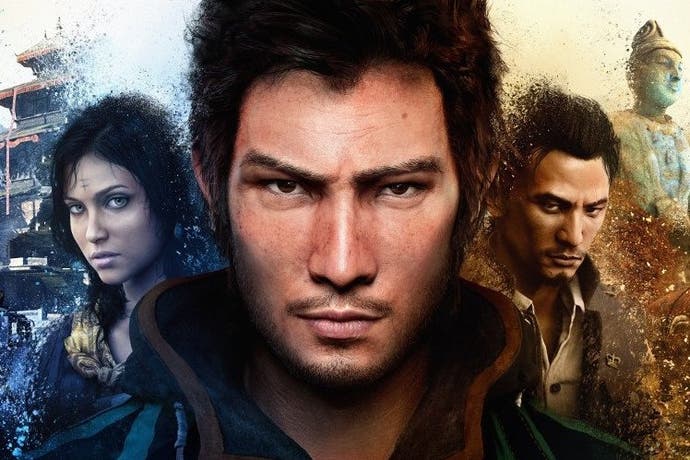

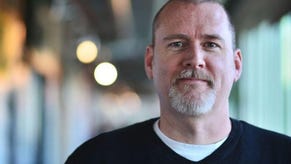
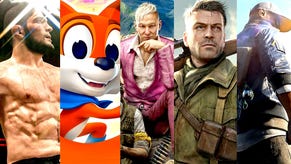
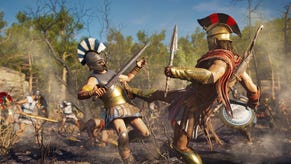

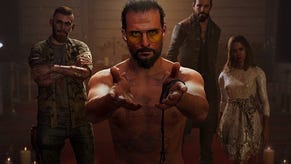

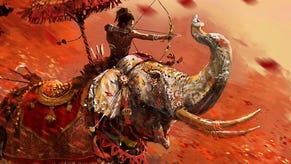
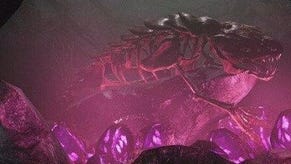



.png?width=291&height=164&fit=crop&quality=80&format=jpg&auto=webp)



